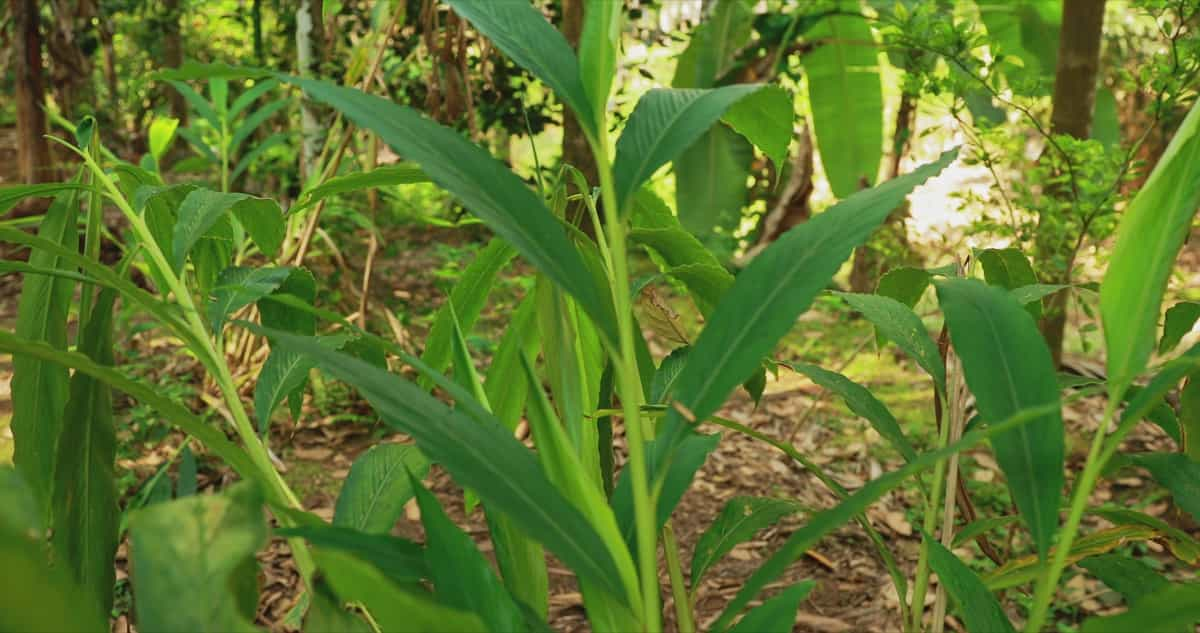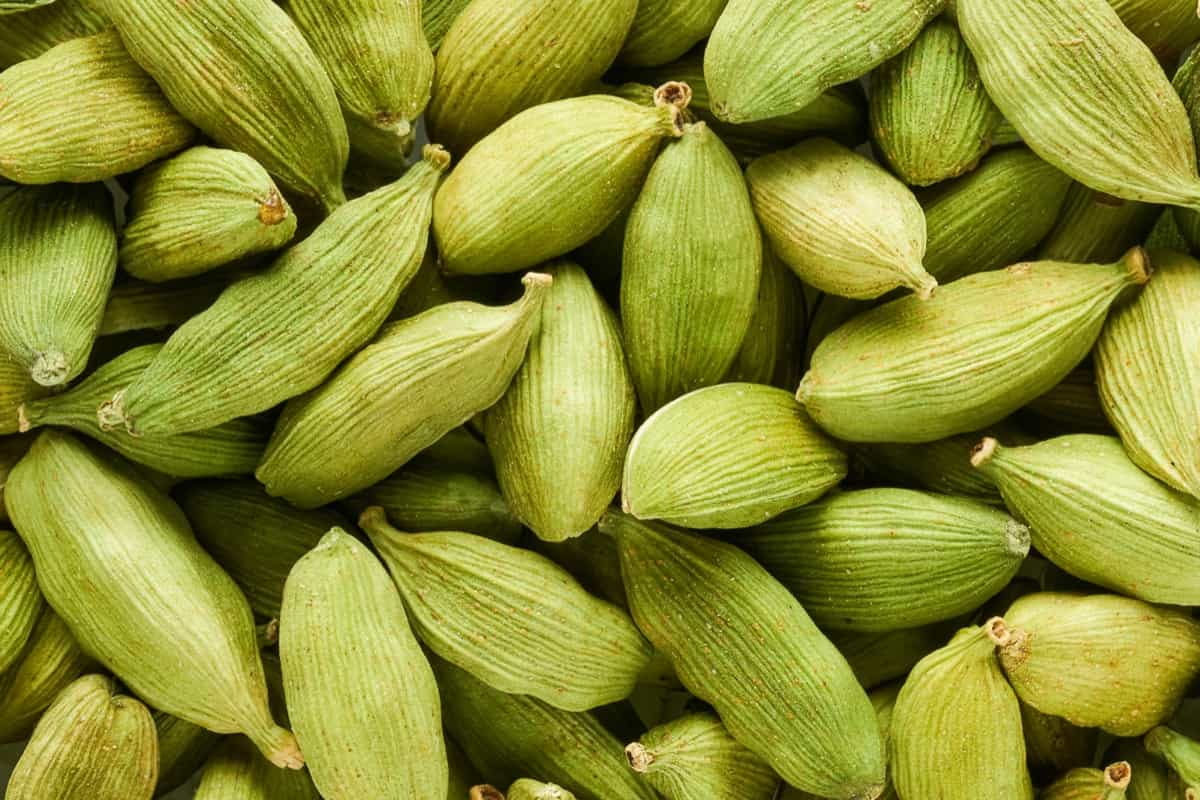Cardamom plants are susceptible to various pests that adversely affect their growth and yield. Common pests include cardamom thrips, shoot and capsule borers, aphids, mites, and root grubs. Cardamom thrips are tiny insects that feed on plant tissues, causing discoloration and stunted growth.

Shoot and capsule borers tunnel into the plant, damaging the shoots and capsules. Aphids are sap-sucking insects that can weaken the plant, while mites cause yellowing of leaves. Root grubs infest the soil, affecting the plant’s root system. These pests collectively threaten cardamom cultivation, necessitating effective and natural control measures to mitigate their impact.
How to Control Cardamom Pests Naturally
How to Identify Common Cardamom Pests
Cardamom thrips can be recognized by their slender bodies and characteristic wing fringes, while shoot and capsule borers leave visible entry holes on shoots and capsules. Aphids are small, pear-shaped insects often found clustered on the underside of leaves, and mites manifest as tiny, moving dots on plant surfaces.
Though concealed in the soil, root grubs can be identified by carefully inspecting the root system for larval presence. Regular monitoring and a keen eye for these signs are essential for early detection, enabling prompt intervention with natural and organic treatments to safeguard cardamom plants from pest infestations.
Cultural Practices for Pest Prevention
Implementing cultural practices is key to preventing pest infestations in cardamom plants. Start by maintaining proper spacing between plants to enhance air circulation and reduce humidity, creating an unfavorable environment for pests. Regularly remove weeds and debris, as they can harbor pests.
Employ crop rotation to disrupt pest life cycles and promote soil health. Ensure adequate irrigation and drainage to prevent soggy conditions that attract pests. Additionally, promotes beneficial insects like ladybugs and parasitic wasps, as they act as natural predators. These cultural practices collectively create an inhospitable environment for pests, fostering a healthier cardamom crop.
Best Companion Plants for Pest Control in Cardamom Plants
Marigolds emit compounds that deter nematodes, protecting cardamom roots. Basil repels mosquitoes and aphids while enhancing cardamom flavor. Mint acts as a natural insect repellent, keeping pests at bay. Nasturtiums attract aphids away from cardamom, acting as a sacrificial host.
Chives deter pests with their strong scent. These companion plants create a symbiotic environment, reducing the likelihood of pest infestations in cardamom crops. Incorporating them into the garden design is a natural and holistic approach to pest management in cardamom cultivation.
Use Physical Barriers and Traps to Catch Cardamom Pests
Deploying physical barriers and traps is an effective, natural method to catch cardamom pests. Install row covers made of fine mesh to create a barrier that prevents insects like thrips and aphids from reaching the cardamom plants. Sticky traps placed strategically attract and capture flying pests like thrips and mites.
In case you missed it: Neem Oil for Controlling Whiteflies in Your Garden: A Natural and Organic Solution

Pheromone traps can disrupt the mating patterns of certain pests, reducing their population. These physical barriers and traps serve as non-toxic alternatives, offering an environmentally friendly means of controlling cardamom pests while minimizing chemical interventions.
Best Homemade Organic Sprays and Recipes for Natural Pest Control in Cardamom Plants
Create effective homemade organic sprays for natural pest control in cardamom plants. Neem oil, a potent insect repellent, can be mixed with water and soap to deter various pests. Garlic and chili pepper sprays act as natural deterrents for aphids and mites. A dish soap and water mixture disrupts insect cell membranes, providing an organic solution for controlling pests. Water and diatomaceous earth can also be sprayed on cardamom plants to combat crawling pests. These homemade sprays offer a chemical-free approach, promoting a healthy and thriving cardamom crop.
Use Neem Oil as a Natural Insecticide to Combat Cardamom Pests
Neem oil serves as a powerful natural insecticide to combat cardamom pests. Extracted from the neem tree, it contains azadirachtin, a compound disrupting the growth and development of various insects. Dilute neem oil with water and a small amount of soap, then spray it on cardamom plants.
This organic solution effectively repels and disrupts the life cycle of pests like thrips, aphids, and mites while being environmentally friendly. The regular application is a preventive measure and helps maintain a healthy cardamom crop, making neem oil a valuable tool in natural pest control strategies.
Use Garlic and Chili Pepper Spray Pest Repellent for Cardamom Plants
Create a solution by blending garlic cloves and chili peppers with water. Strain the mixture and add a small amount of soap for adhesion. Spray this concoction on cardamom plants, creating a potent deterrent for aphids, mites, and other pests. The pungent aroma and spiciness of garlic and chili peppers disrupt the feeding habits of insects, offering an organic and environmentally friendly alternative for pest control. Regularly applying this homemade spray provides a protective shield, promoting the well-being of cardamom crops without the need for harmful chemicals.
Introduce Beneficial Insects for Biological Control of Cardamom Pests
Ladybugs are voracious predators of aphids, while parasitic wasps target caterpillars and larvae. Green lacewings feed on various pests, including thrips and mites. Predatory beetles, like ground beetles and rove beetles, contribute to pest suppression in the soil. Encourage these beneficial insects by planting companion plants that attract them, such as marigolds and dill. By fostering a balanced ecosystem, these natural predators help keep cardamom pests in check, reducing the reliance on chemical interventions and promoting a sustainable and eco-friendly approach to pest control.
Monitor Regularly for Early Detection of Cardamom Pests
Regular monitoring is a crucial step for early detection of cardamom pests. Inspect plants frequently for signs of infestation, such as discolored leaves, holes, or pests. Focus on the undersides of leaves, where aphids and mites often hide. Employ yellow sticky traps to catch flying pests like thrips.
In case you missed it: Neem Oil for Slugs and Snails Control in the Garden: A Natural and Organic Approach

Check the soil for signs of root grubs. Swift identification allows timely intervention, minimizing damage and reducing the need for aggressive control measures. Early detection enables a proactive approach, ensuring the health and productivity of cardamom plants while facilitating the implementation of natural and organic pest control methods.
Conclusion
In conclusion, employing natural and organic methods for controlling cardamom pests is effective and promotes sustainable and eco-friendly cultivation. These approaches safeguard cardamom crops while minimizing environmental impact. Embracing such holistic strategies ensures a harmonious balance in pest management, fostering cardamom plants’ long-term health and resilience.
- Beneficial Insects in Pest Management
- Natural Solutions for Pest Control in Flower Gardens
- Types of Fungicides Used in Agriculture
- Common Issues in the Fruit Development Stage of Pomegranate Farming
- Fruit Development Issues in Papaya: Easy Solutions and Treatment
- Soil-Borne Diseases and How to Protect Your Plants
- Practices to Prevent Disease Spread in the Garden
- From Wilted to Thriving: How to Treat Root Rot Naturally in Houseplants
- Natural Remedies to Cure Brown Spots on Fig Tree Leaves